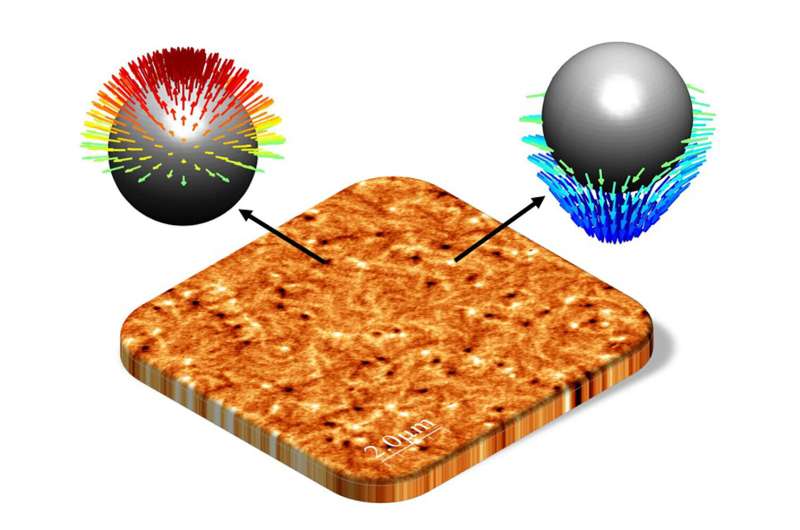This article has been reviewed according to Science X's editorial process and policies. Editors have highlighted the following attributes while ensuring the content's credibility:
fact-checked
peer-reviewed publication
trusted source
proofread
Merons realized in synthetic antiferromagnets

The electronic devices we use on a day-to-day basis are powered by electrical currents. This is the case with our living room lights, washing machines, and televisions, to name but a few examples. Data processing in computers also relies on information provided by tiny charge carriers called electrons.
The field of spintronics, however, employs a different concept. Instead of the charge of electrons, the spintronic approach is to exploit their magnetic moment, in other words, their spin, to store and process information—aiming to make the computers of the future more compact, fast, and sustainable.
One way of processing information based on this approach is to use the magnetic vortices called skyrmions or, alternatively, their still-little-understood and rarer cousins called "merons." Both are collective topological structures formed of numerous individual spins. Merons have to date only been observed in natural antiferromagnets, where they are difficult to both analyze and manipulate.
Finding merons in synthetic antiferromagnets
Working in collaboration with teams at Tohoku University in Japan and the ALBA Synchrotron Light Facility in Spain, researchers of Johannes Gutenberg University Mainz (JGU) have been the first to demonstrate the presence of merons in synthetic antiferromagnets and thus in materials that can be produced using standard deposition techniques. The results of the current research have been published in Nature Communications.
"We were able to devise a novel habitat for what is a new and very 'shy' species," said Dr. Robert Frömter, a physicist at JGU. The research achievement involves designing synthetic antiferromagnets in such a way that merons are formed in them as well as the detection of the merons themselves.
In order to put together the corresponding materials made of multiple layers, the researchers undertook extensive simulations and conducted analytical calculations of spin structures in cooperation with a theory group at JGU. The goal was to determine the optimal thickness of each layer and the suitable material to facilitate the hosting of merons and to understand the criteria for their stability.
In tandem with theoretical work, the team pursued experiments to address these challenges. "With the aid of magnetic force microscopy in conjunction with the less familiar scanning electron microscopy with polarization analysis, we successfully identified merons in our synthetic antiferromagnets," explained Mona Bhukta, a doctoral candidate at JGU's Institute of Physics. "We have thus managed to make a step forward towards the potential application of merons."
More information: Mona Bhukta et al, Homochiral antiferromagnetic merons, antimerons and bimerons realized in synthetic antiferromagnets, Nature Communications (2024). DOI: 10.1038/s41467-024-45375-z
Journal information: Nature Communications
Provided by Johannes Gutenberg University Mainz





















